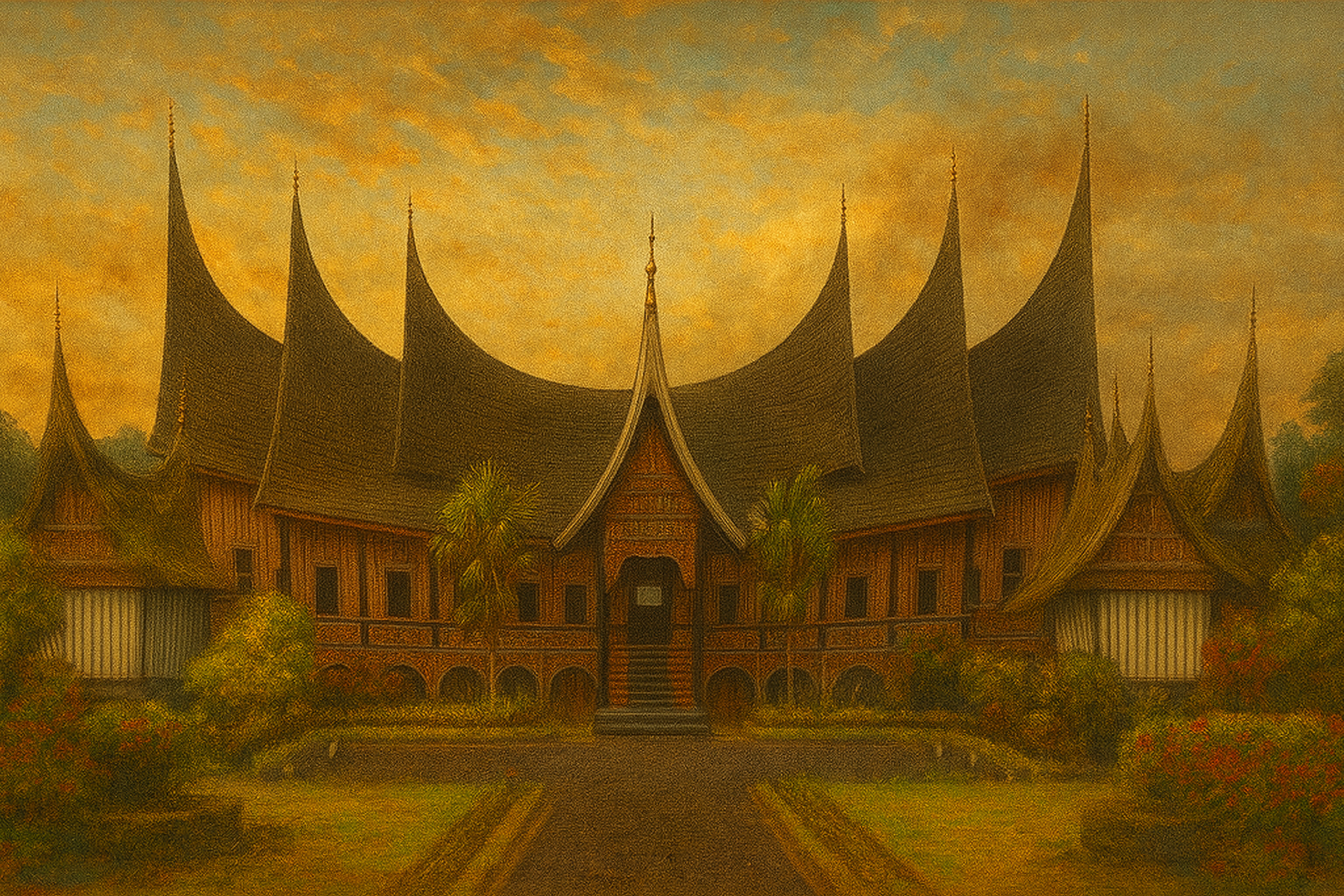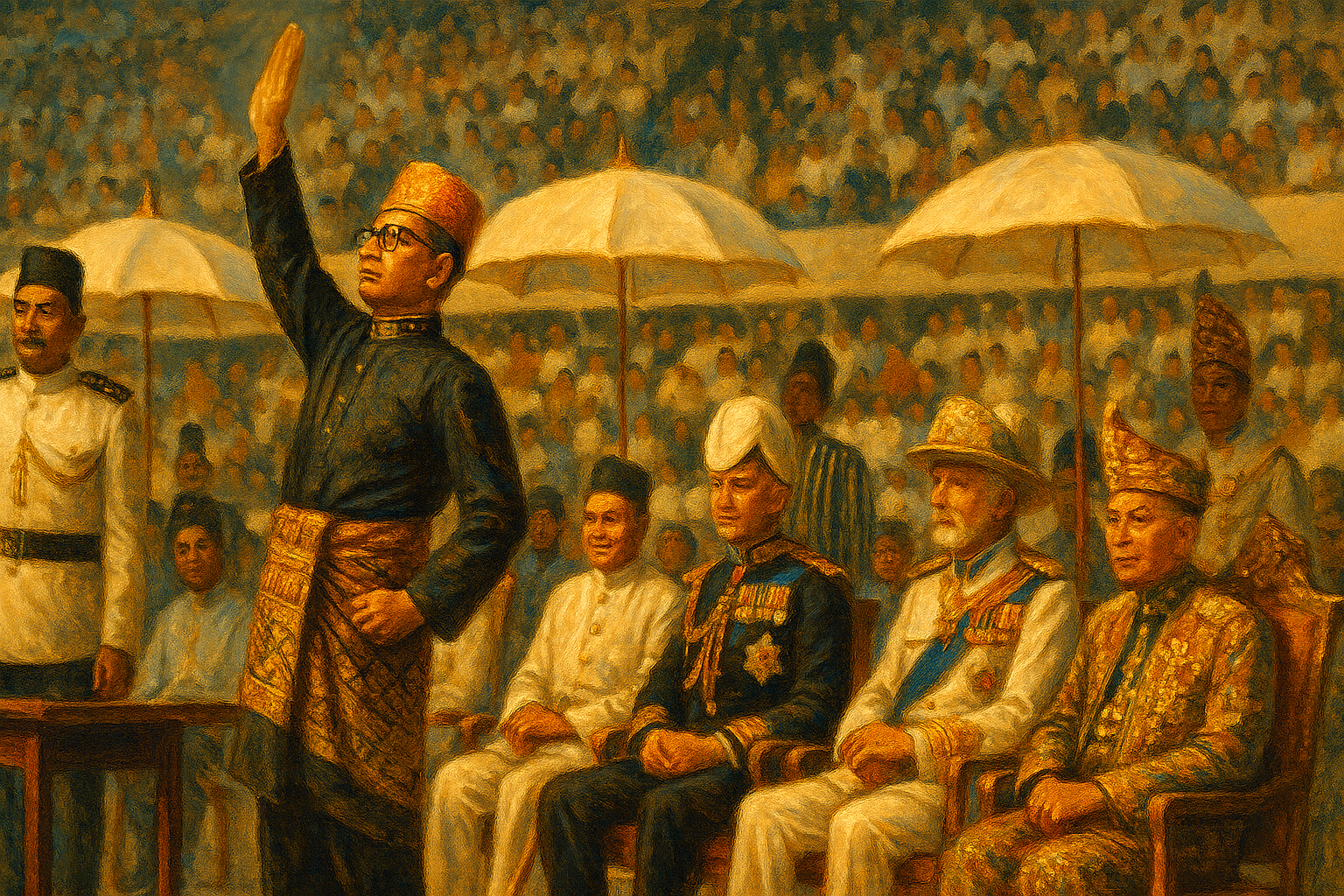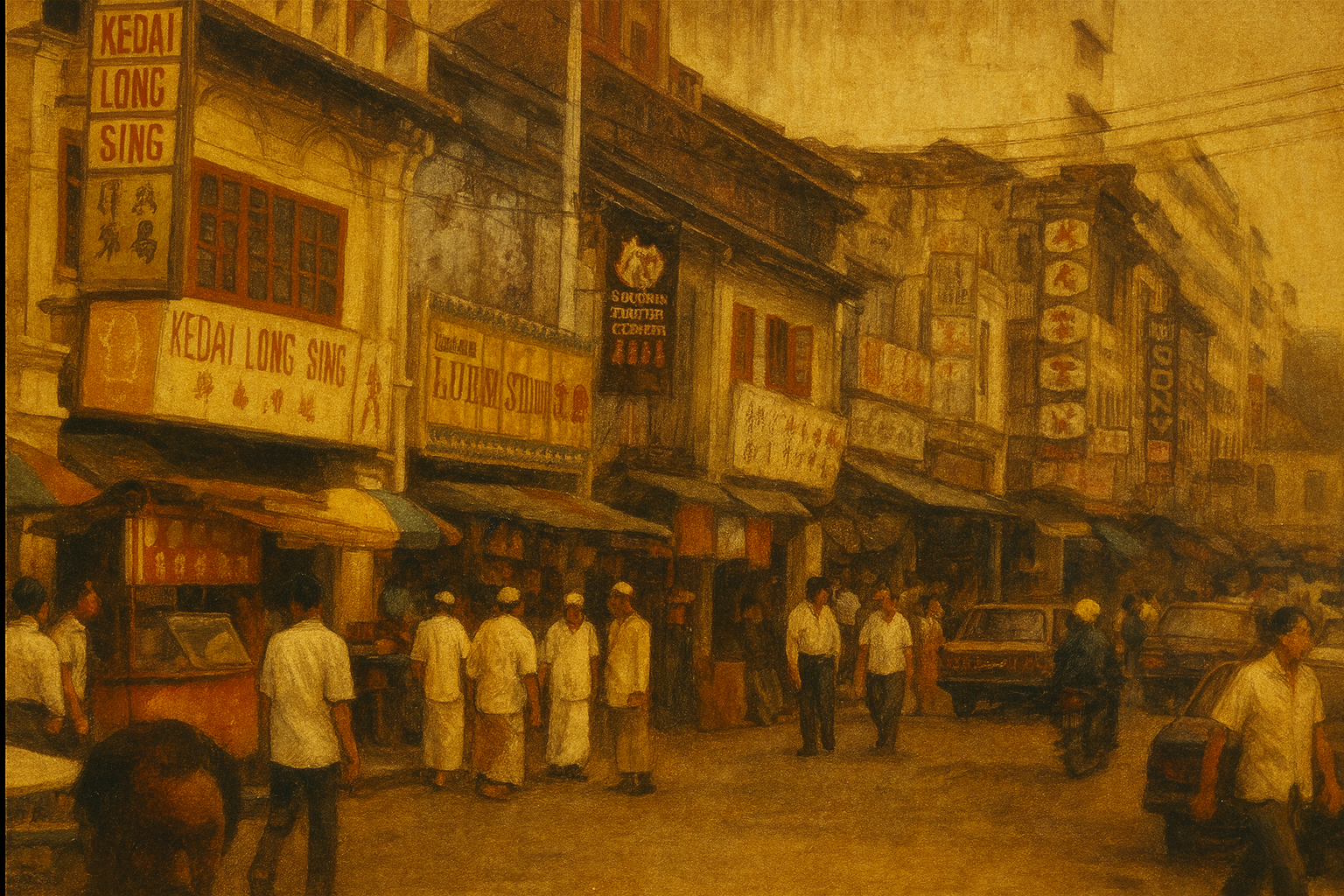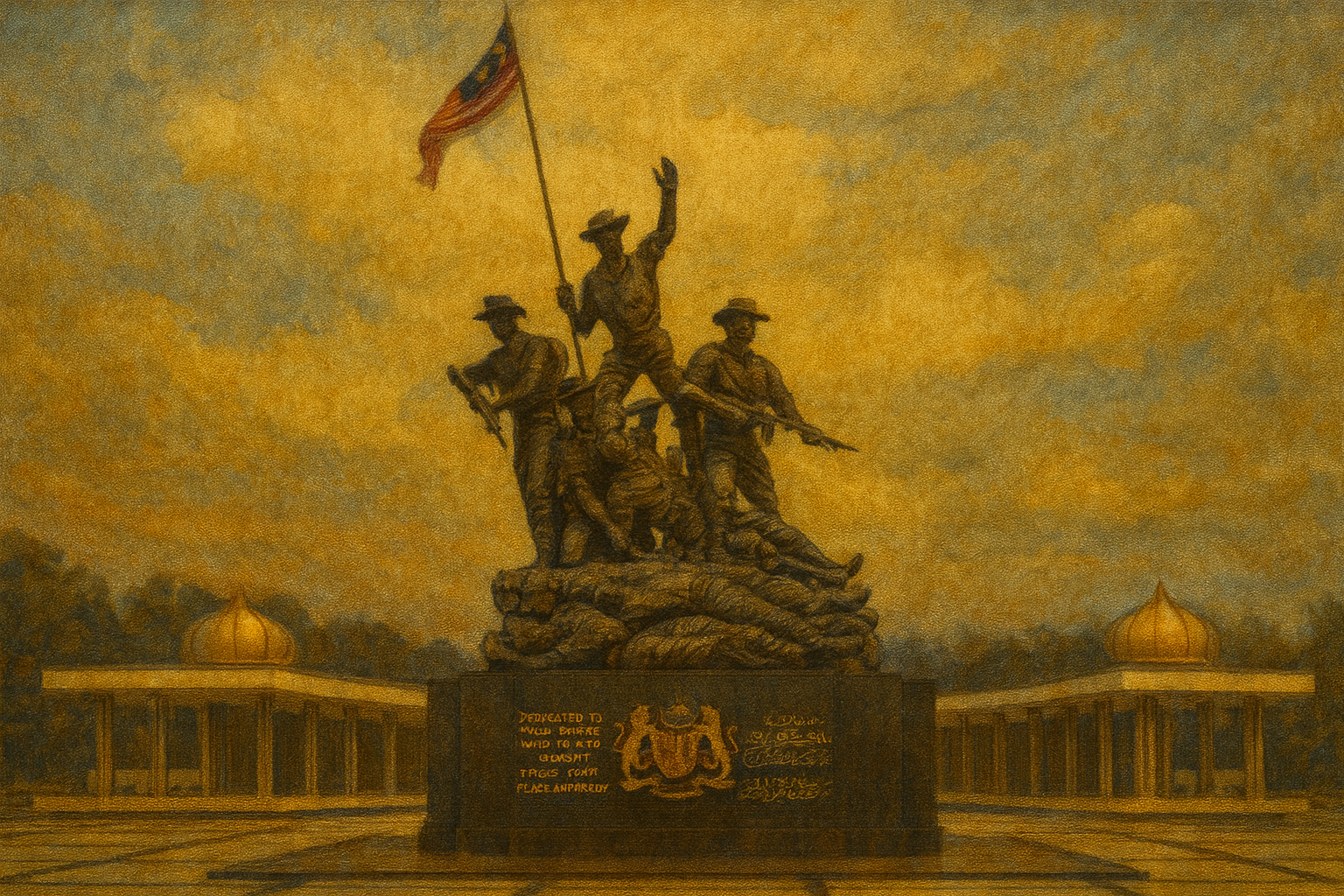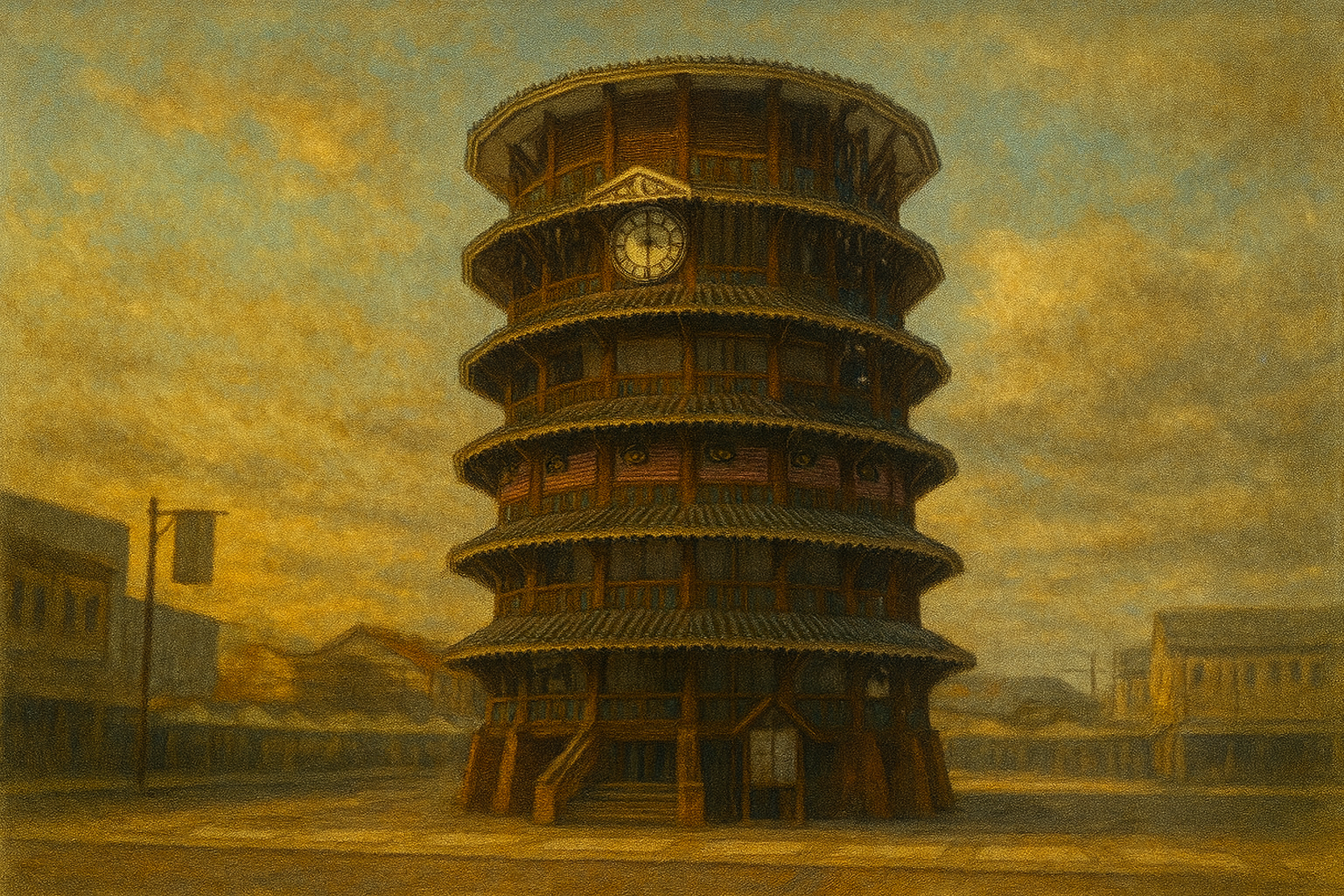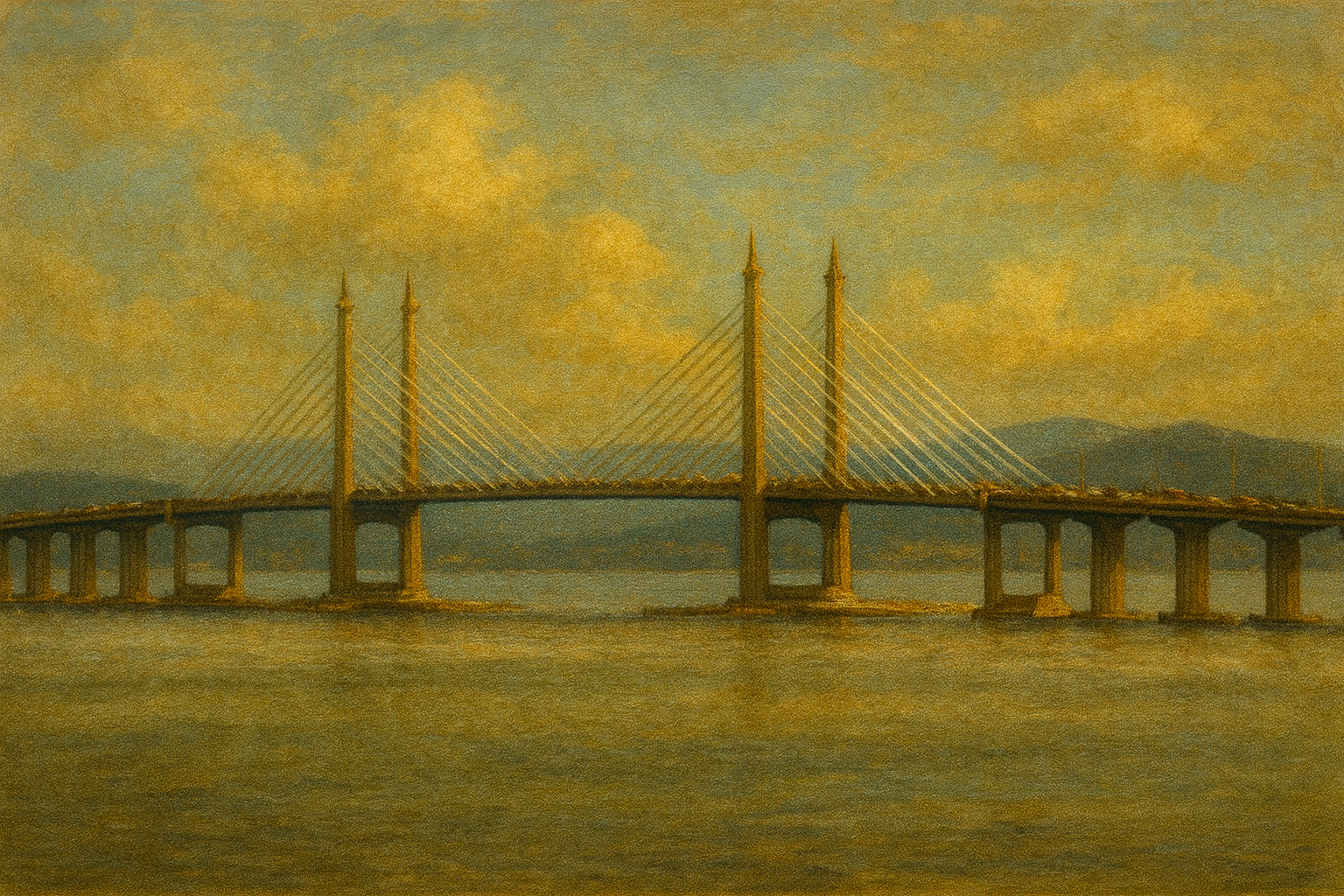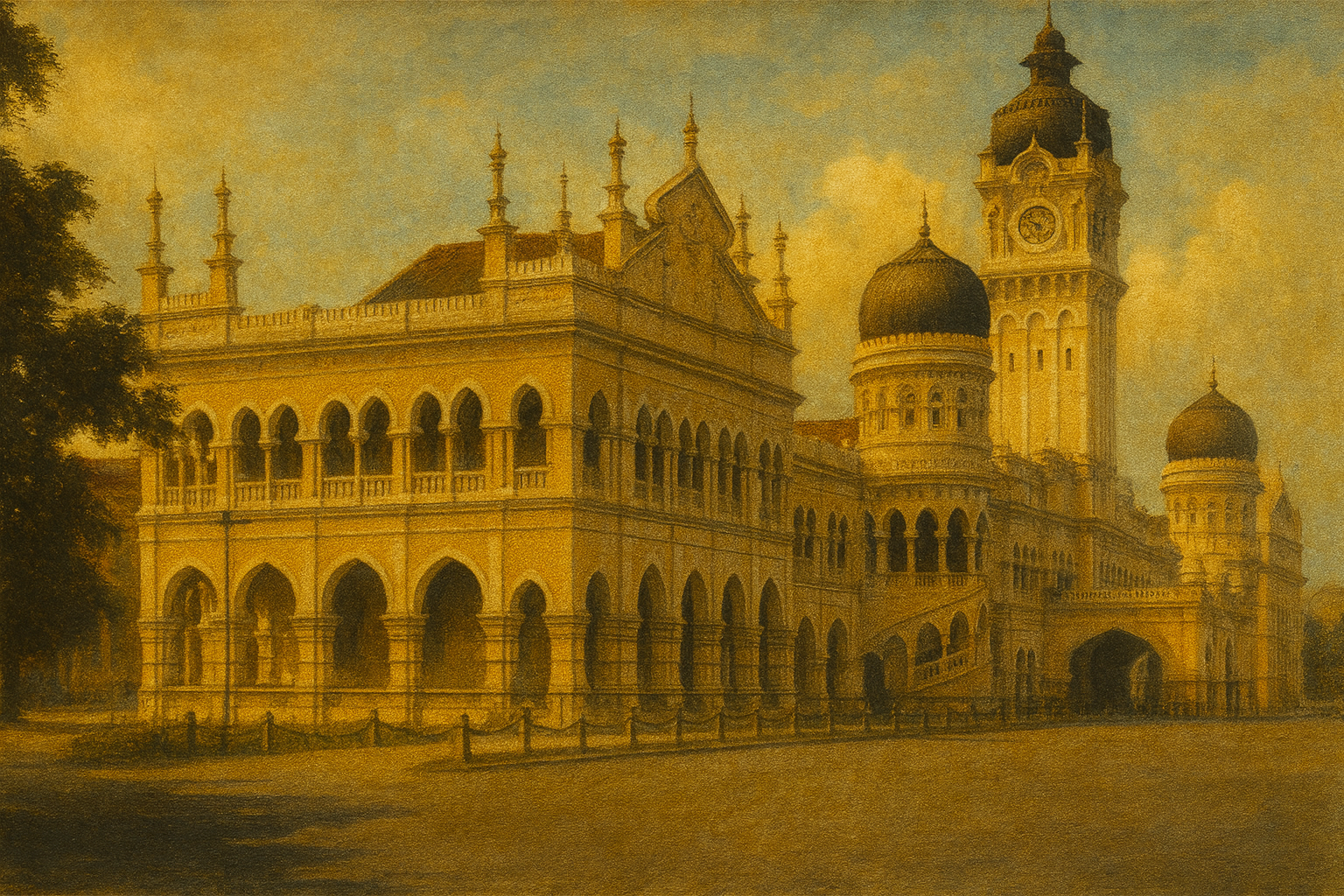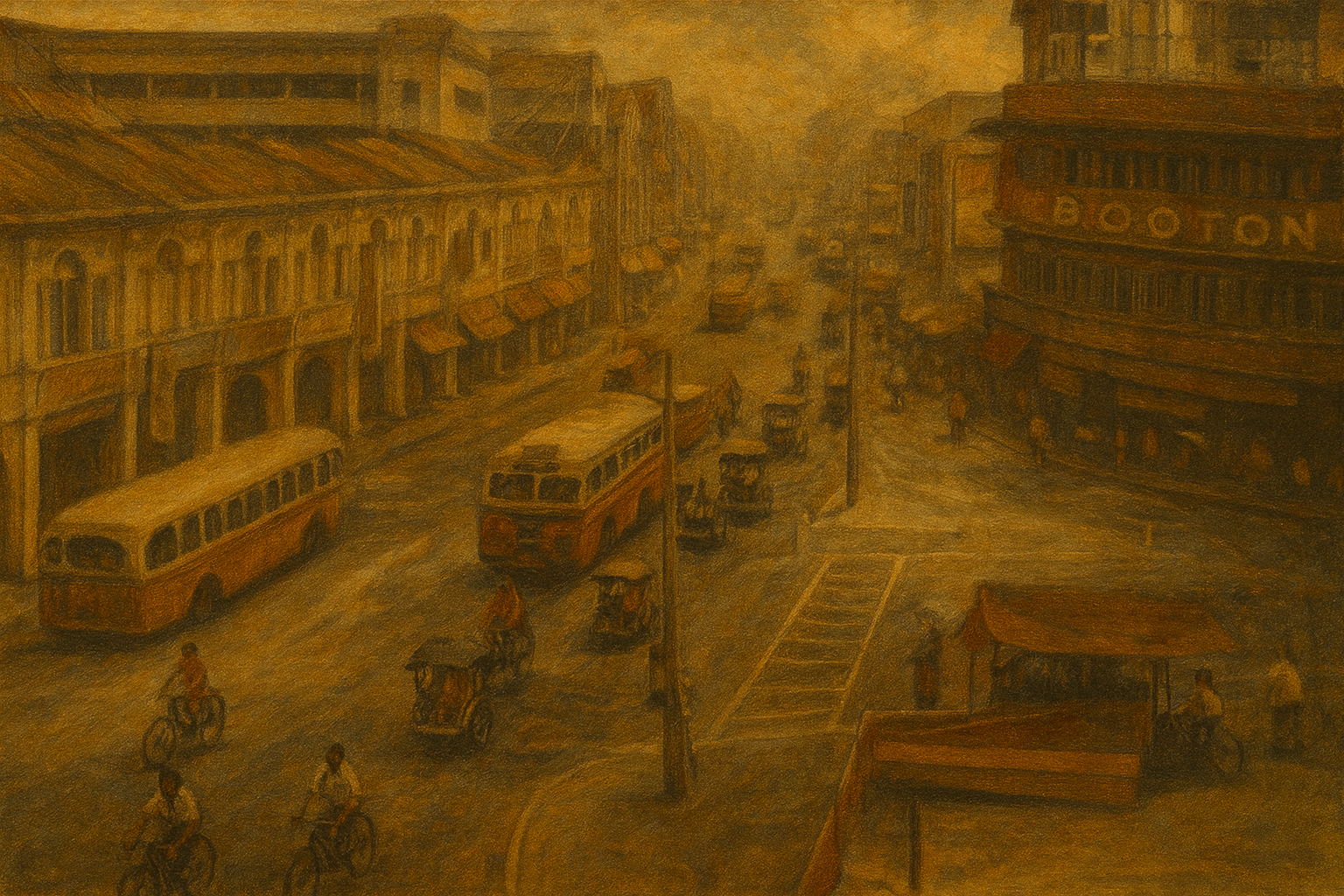1945

| GDP Per Capita (USD) | 10 |
| Population (millions) | 4.83 |
| Nasi Lemak Price | 10000 yen |
| Teh Tarik Price | 5000 yen |
| Urban Population Percentage | 12% |
Japanese Occupation Era
For folks in Malaya, life during Japanese Occupation meant scarcity—food, medicines, jobs diminished.
World War II
A truly global conflict where the decisions made in Europe, Asia, and the Pacific reverberated everywhere.

Battle of the Malacca Strait
The Battle of the Malacca Strait, fought on the night of 15–16 May 1945, was a decisive naval engagement in World War II where British destroyers sank the Japanese heavy cruiser Haguro in the strait between Malaya and Sumatra, disrupting Japanese supply lines in Southeast Asia.

Atomic Bombings of Hiroshima and Nagasaki
The atomic bombings of Hiroshima on August 6, 1945, and Nagasaki on August 9, 1945, by the United States were the first and only uses of nuclear weapons in warfare, resulting in over 150,000 deaths and forcing Japan's surrender in World War II, which ended the Japanese occupation of Malaya and reshaped global politics.

Japanese Announcement of Surrender and the End of Occupation in Malaya, 1945
The Japanese announcement of surrender on 15 August 1945 marked the end of nearly four years of brutal occupation in Malaya, releasing the region from Japanese control and initiating a transitional phase under British administration amid the broader capitulation of Imperial Japan in World War II.

Operation Zipper
Operation Zipper was a British-led plan for the amphibious reoccupation of Malaya from Japanese forces in World War II.

Surrender of Japanese Forces in Penang
The surrender of Japanese forces in Penang on 2 September 1945 marked a pivotal moment in the closing days of World War II in Southeast Asia, ending the three-and-a-half-year occupation of Malaya and restoring British colonial authority as the first territory in the Malay Peninsula to be liberated.

Installation of British Military Administration in Kuala Lumpur
The installation of the British Military Administration (BMA) in Kuala Lumpur on 12 September 1945 marked the end of Japanese occupation in Malaya and the resumption of British colonial authority, initiating post-war reconstruction amid economic challenges and ethnic tensions.
Establishment of the Civil Affairs Police Force 1945
The establishment of the Civil Affairs Police Force in September 1945 marked a crucial step in the post-World War II reconstruction of law enforcement in British Malaya, creating a unified police organization to restore stability after the Japanese occupation and laying the foundation for the modern Royal Malaysia Police.
Establishment of Parti Kebangsaan Melayu Malaya (PKMM), 1945
The Parti Kebangsaan Melayu Malaya (PKMM), or Malay Nationalist Party, was founded on 17 October 1945 in Ipoh, Perak, as the first organized Malay political party in post-World War II Malaya, advocating for independence, nationalism, and social justice amid rising anti-colonial sentiments.
Establishment of Angkatan Wanita Sedar (AWAS)
The establishment of Angkatan Wanita Sedar (AWAS) in late 1945 marked the formation of the first nationalist women's organization in Malaya, affiliated with the Parti Kebangsaan Melayu Malaya (PKMM), aimed at awakening Malay women to political consciousness and advancing the independence struggle against British colonial rule.
